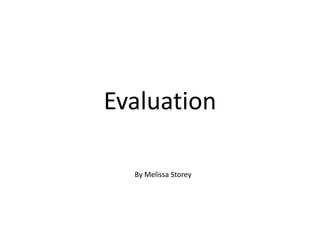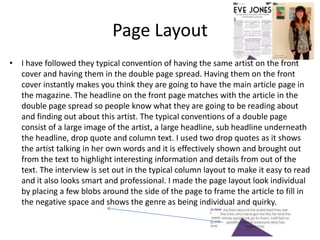This document summarizes how the media product uses, develops, and challenges conventions of real music magazines. It analyzes the front cover, contents page, and double-page article spread. Conventions are followed, such as masthead placement and page numbers. Conventions are developed, like using filters on images. Conventions are challenged, like an unconventional masthead font. Overall it examines magazine design elements and how conventions are applied, modified, or subverted.



















